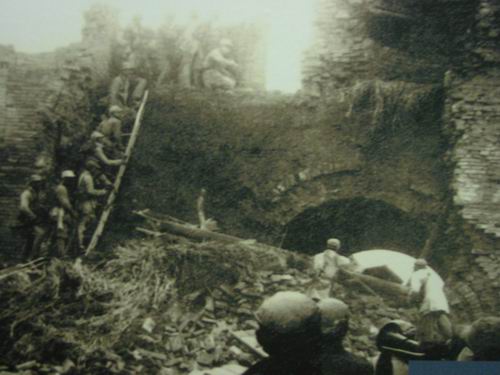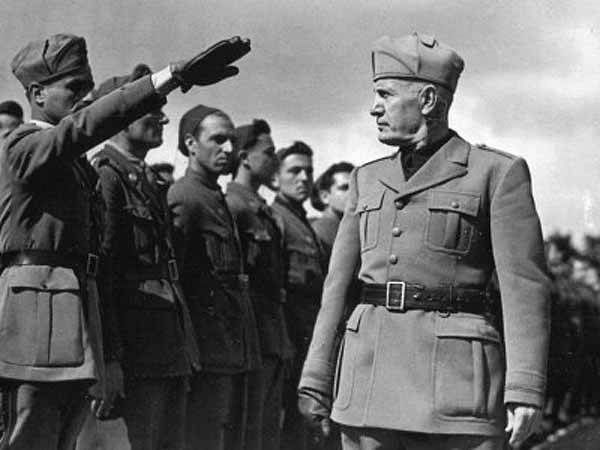|
Lion Rock
Lion Rock, or less formally Lion Rock Hill, is a List of mountains, peaks and hills in Hong Kong, mountain in Hong Kong. It is located in Sha Tin District, between Kowloon Tong of Kowloon and Tai Wai of the New Territories, and is high. The peak consists of granite covered sparsely by shrubs. The Geology of Hong Kong#Lion Rock and Kowloon granite, Kowloon granite, which includes Lion Rock, is estimated to be around 140 million years old. Lion Rock is noted for its shape. Its resemblance to a crouching lion is most striking from the Choi Hung and San Po Kong areas in East Kowloon. A trail winds its way up the forested hillside to the top, culminating atop the "lion's head". The trail can be followed across the profile of the lion, eventually linking up with the MacLehose Trail. The rock provides a view of the city and Hong Kong Island in the distance. The entire mountain is located within Lion Rock Country Park, south of Hung Mui Kuk, Tai Wai and is made passable by vehicles ... [...More Info...] [...Related Items...] OR: [Wikipedia] [Google] [Baidu] [Amazon] |
List Of Mountains, Peaks And Hills In Hong Kong
The following is a list of mountains, peaks and hills in Hong Kong. In the Hong Kong Government Cantonese Romanisation, romanisation system used by the Hong Kong Government known as Standard Romanization (Cantonese), Standard Romanisation, 'shan' and 'leng' are the transliterations of the Cantonese words for 'mount' (山) and 'ridge' (嶺), respectively. 'Toi', 'kong', 'fung' and 'koi' also correspond to 'mount' in English and 'teng' corresponds to 'peak'. It is this system which is used in the list below. Highest peaks of Hong Kong Lesser Hills There are numerous smaller hills that dot Hong Kong and some that have disappeared with re-development: Volcanoes *Tai Mo Shan *High Island (Benedict Kingdom), High Island Supervolcano *Kwun Yam Shan, Lam Tsuen, Kwun Yam Shan, Lam Tsuenhttp://geolsoc.org.hk/_newsletters/VOL%252014.2_Mar2008.pdf https://www.facebook.com/permalink.php?id=231062983601269&story_fbid=673694836004746& Removed hills *Cheung Pei Shan *Sacred Hill ... [...More Info...] [...Related Items...] OR: [Wikipedia] [Google] [Baidu] [Amazon] |
Hung Mui Kuk
Tai Wai (Chinese: 大圍 ) is an area in the New Territories, Hong Kong, located between Sha Tin and the Lion Rock, within the Sha Tin District. With three rapid transit stations, one of which an interchange station serving two lines, five bus termini and several trunk roads and tunnels connecting it to other parts of the New Territories, such as Tsuen Wan, and Kowloon, Tai Wai is an important transport node in Hong Kong. Geography Tai Wai occupies the southwestern end of the Sha Tin Valley. The Sha Tin area is located directly northeast of Tai Wai. Hill ranges separate Tai Wai from New Kowloon in the south, and from Tsuen Wan in the west. The Tai Wai Nullah, sometimes referred to as the upper stream of Shing Mun River, flows through Tai Wai, where it joins the Shing Mun River. The Shing Mun River then flows in a southwest–northeast direction across the Sha Tin Valley towards Tolo Harbour. History Sprouting from traditional farming villages growing rice, vegetables ... [...More Info...] [...Related Items...] OR: [Wikipedia] [Google] [Baidu] [Amazon] |
Brand Hong Kong
Brand Hong Kong (BrandHK) is a government programme launched in 2001 designed to promote Hong Kong as "Asia’s World City." The purpose of this concept is to create a reputation for Hong Kong as a top international city. This idea was formed after the transfer of sovereignty over Hong Kong in 1997, the event that made Hong Kong a special administrative region of China. The branding features Hong Kong as a place of "creativity, entrepreneurship, global connectivity, security, and rich diversity." Brand HK, often referred to in the context of Hong Kong, can pertain to various sectors, including fashion, technology, and local culture. It is also associated with local brands or products that emphasize Hong Kong’s unique identity. In 2010, following a major review and public engagement exercise, BrandHK was updated, incorporating changes to its visual identity, core values, attributes, and brand platform. History The idea of “ branding” Hong Kong originated in 1997, when m ... [...More Info...] [...Related Items...] OR: [Wikipedia] [Google] [Baidu] [Amazon] |
Lion Rock Spirit
Lion Rock Spirit (), also known as the Spirit of Hong Kong (), is a term describing a "can-do" attitude observed in Hong Kong people and their collective determination to improve their lives in the face of difficulties. It has been compared to the "Blitz Spirit, Blitz spirit" and the "American Dream". The term first emerged during the 1970s and was coined after ''Below the Lion Rock'' (), a television series first aired in 1972 by public broadcaster RTHK. It featured stories about the working class and tackled sociopolitical issues. The series became even more popular in 1979 with the addition of a sentimental Below the Lion Rock (song), theme song of the same name sung by Roman Tam. Despite the widespread popularity of the series and song, the "Lion Rock Spirit" only became a symbol of fortitude ingrained in the collective consciousness of Hong Kong people in 2002, when it was referenced by the city's financial secretary, Antony Leung, in his announcement of the government's ... [...More Info...] [...Related Items...] OR: [Wikipedia] [Google] [Baidu] [Amazon] |
Roman Tam
Roman Tam Pak-sin (; 12 February 1945 – 18 October 2002), known professionally by his stage name Law Man (), was a Hong Kong singer. He is regarded as the "Grand Godfather of Cantopop". Career Born in Baise, Guangxi, China, with family roots in Guiping, Guangxi, he moved to Guangzhou (Canton) in 1947 at the age of two. He later emigrated to Hong Kong in 1962 at the age of 17 because his mother fell ill and was only able to get better medical treatment in Hong Kong. He was poor and was only able to sleep with a sleeping bag and a radio on the floor of a banking building. His musical interests started from listening to the radio. After forming a short-lived band known as Roman and the Four Steps to emulate The Beatles and winning a talent contest in Japan, he became a contract singer under studios term at TVB. He briefly switched to Asia Television in the early 1990s. His stage name was actually a transliteration Transliteration is a type of conversion of a text from ... [...More Info...] [...Related Items...] OR: [Wikipedia] [Google] [Baidu] [Amazon] |
Cantopop
Cantopop (a contraction of "Cantonese pop music") is a genre of pop music sung in Cantonese. Cantopop is also used to refer to the cultural context of its production and consumption. The genre began in the 1970s and became associated with Hong Kong popular music from the middle of the decade. Cantopop then reached its height of popularity in the 1980s and 1990s before slowly declining in the 2000s and shrinking in the 2010s. The term "Cantopop" itself was coined in 1978 after "Cantorock", a term first used in 1974. In the 1980s, Cantopop reached its highest glory with fanbase and concerts all over the world, especially in Macau, Mainland China, Taiwan, Singapore, Malaysia, South Korea, and Japan. This was even more obvious with the influx of songs from Hong Kong movies during the time. Besides Western pop music, Cantopop is also influenced by other international genres, including jazz, rock and roll, R&B, disco, electronic, ballad and others. Cantopop songs are almost inva ... [...More Info...] [...Related Items...] OR: [Wikipedia] [Google] [Baidu] [Amazon] |
Below The Lion Rock (song)
"Below the Lion Rock" () is a Cantopop song by Hong Kong singer Roman Tam. It was composed and arranged by Joseph Koo, with lyrics written by James Wong. It was written and used as the theme song of RTHK's TV show of the same name in 1979. In the 1970s, Cantonese pop songs were starting to gain traction. Different from other Cantonese songs, "Below the Lion Rock" was not meant to be satirizing the society that time. During the 2003 SARS outbreak, the song was often broadcast by the media in Hong Kong, and became regarded as an unofficial anthem of Hong Kong. In 2013, the 'Hong Kong Our Home' () campaign, run by the Hong Kong government to boost community cohesion, used lyrics from this song. In the same year, the Wikimania conference was held in Hong Kong. Its motto, 'Of one mind in pursuit of our dream; All discord set aside' (), is a line from this song. See also * Lion Rock, mountain in Hong Kong * Lion Rock Spirit Lion Rock Spirit (), also known as the Spirit of H ... [...More Info...] [...Related Items...] OR: [Wikipedia] [Google] [Baidu] [Amazon] |
Ann Hui
Ann Hui On-wah, (; born 23 May 1947) is a film director, producer, screenwriter and actress from Hong Kong who is one of the most critically acclaimed filmmakers of the Hong Kong New Wave. She is known for her films about social issues in Hong Kong which include literary adaptations, martial arts, semi-autobiographical works, women's issues, social phenomena, political changes, and thrillers. She served as the president of the Hong Kong Film Directors' Guild from 2004 to 2006. Hui has won numerous awards. She won Best Director at the Golden Horse Awards three times (1999, 2011, 2014); Best Film at the Asia Pacific Film Festival; and Best Director at the Hong Kong Film Awards six times (1983, 1996, 2009, 2012, 2015, 2018). Only two films have won a Grand Slam (Best Picture, Best Director, Best Screenplay, Best Actor, and Best Actress) at the Hong Kong Film Awards; they are '' Summer Snow'' and '' A Simple Life'', both directed by Ann Hui. She was honored for her lifetim ... [...More Info...] [...Related Items...] OR: [Wikipedia] [Google] [Baidu] [Amazon] |
Below The Lion Rock
''Below the Lion Rock'' () is a TV show about the lives of Hong Kong citizens. It was broadcast during five periods, each forming its own series, from 1972 to 1980, 1984 to 1987, 1992 to 1994, 2006, and 2014 to 2022. Each series was a collection of unrelated stories produced by the RTHK, and depicted the life stories of different social strata set against backgrounds that are today part of Hong Kong history, such as the Shek Kip Mei Fire that burnt down the slums, and the early immigrants from Mainland China. The stories showed the perceptions people had on the society back in those times. It was a very emotionally moving series and was thus highly successful in ratings. In the early 1970s, the show focused on one character "Uncle Tak" (德叔) portrayed by veteran Cantonese actor Leung Meng (良鳴) and his family moving into a new flat, it was only later the producers started producing collections of unrelated stories. Directors of the series including several renowned Hong Kon ... [...More Info...] [...Related Items...] OR: [Wikipedia] [Google] [Baidu] [Amazon] |
RTHK
Radio Television Hong Kong (RTHK) is the public broadcasting service of Hong Kong. GOW, the predecessor to RTHK, was established in 1928 as the first broadcasting service in Hong Kong. As a government department under the Commerce and Economic Development Bureau of the Hong Kong Government that directly supported by annual government funding, RTHK's educational, entertainment, and public affairs programmes are broadcast on its eight radio channels and five television channels, as well as commercial television channels. History The British Hong Kong Government launched its first radio broadcasting station, known as "GOW", on 20 June 1928, with a starting staff of only six people. Several name changes occurred over the next few years, and it eventually became known as "Radio Hong Kong" (RHK) () in 1948. In 1949, broadcasting operations were taken over by the Government Information Services (GIS), but by 1954, RHK had managed to establish itself as an independent departmen ... [...More Info...] [...Related Items...] OR: [Wikipedia] [Google] [Baidu] [Amazon] |
China Civil War
The Chinese Civil War was fought between the Kuomintang-led government of the Republic of China and the forces of the Chinese Communist Party (CCP). Armed conflict continued intermittently from 1 August 1927 until Communist victory resulted in their total control over mainland China on 7 December 1949. The war is generally divided into two phases with an interlude: from August 1927 to 1937, the First United Front alliance of the KMT and CCP collapsed during the Northern Expedition, and the Nationalists controlled most of China. From 1937 to 1945, hostilities were mostly put on hold as the Second United Front fought the Japanese invasion of China with eventual help from the Allies of World War II. However, armed clashes between the groups remained common. Exacerbating the divisions within China further was the formation of the Wang Jingwei regime, a Japan-sponsored puppet government led by Wang Jingwei, which was established to nominally govern the regions of China that came ... [...More Info...] [...Related Items...] OR: [Wikipedia] [Google] [Baidu] [Amazon] |
World War II
World War II or the Second World War (1 September 1939 – 2 September 1945) was a World war, global conflict between two coalitions: the Allies of World War II, Allies and the Axis powers. World War II by country, Nearly all of the world's countries participated, with many nations mobilising all resources in pursuit of total war. Tanks in World War II, Tanks and Air warfare of World War II, aircraft played major roles, enabling the strategic bombing of cities and delivery of the Atomic bombings of Hiroshima and Nagasaki, first and only nuclear weapons ever used in war. World War II is the List of wars by death toll, deadliest conflict in history, causing World War II casualties, the death of 70 to 85 million people, more than half of whom were civilians. Millions died in genocides, including the Holocaust, and by massacres, starvation, and disease. After the Allied victory, Allied-occupied Germany, Germany, Allied-occupied Austria, Austria, Occupation of Japan, Japan, a ... [...More Info...] [...Related Items...] OR: [Wikipedia] [Google] [Baidu] [Amazon] |





